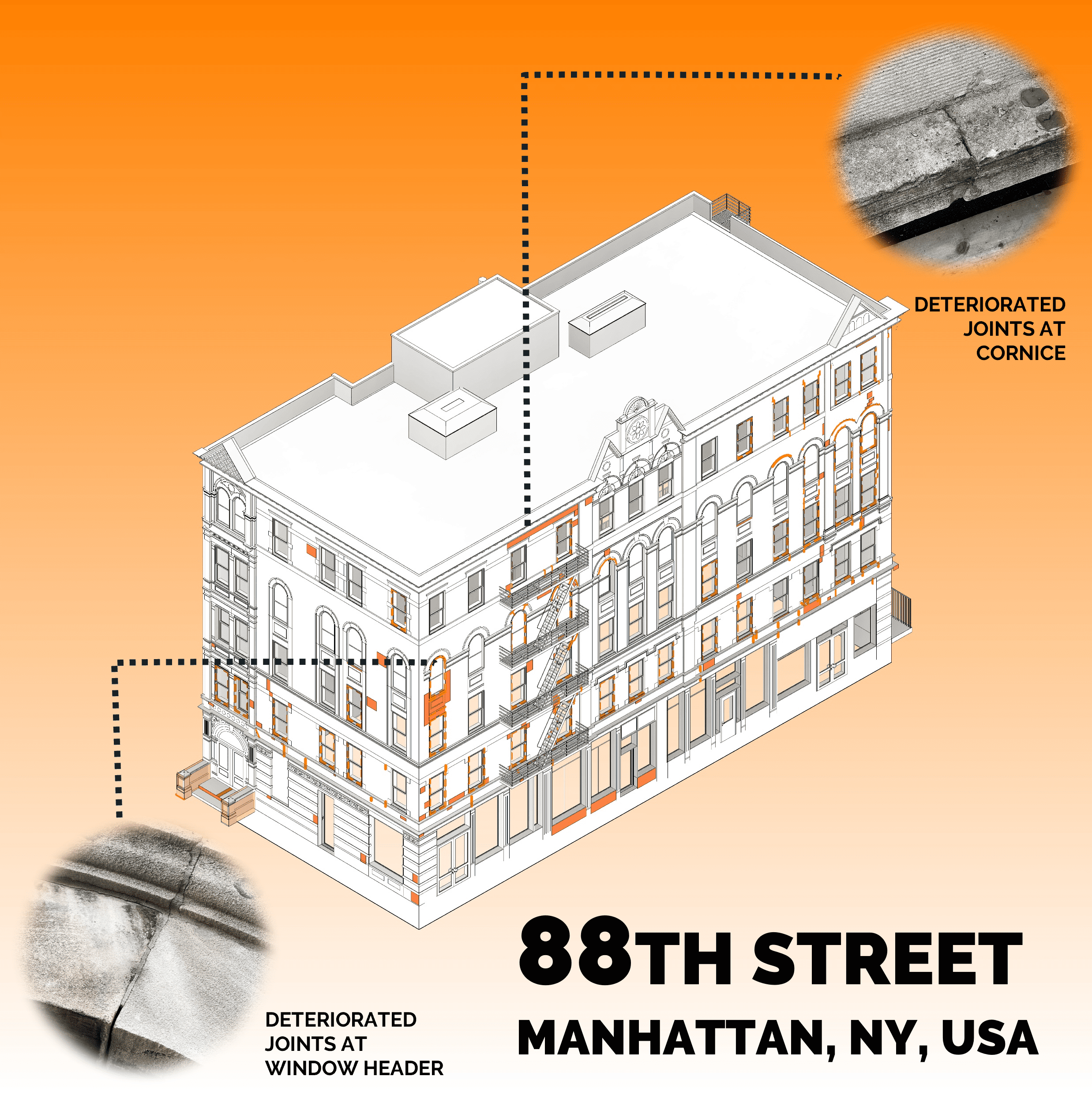Strength in Every Connection: The Protective Role of Mortar Joints in Architectural Restoration
14 DECEMBER 2024
As we approach the holiday season—a time of unity and connection—we’re reminded of the vital role that connections play, not just in bringing people together but in safeguarding architectural masterpieces. This week, we’re focusing on the mortar joints that shield and support the intricate elements of facades, including terracotta, stone cornices, and other decorative features.
During our recent inspection of a breathtaking building on 88th Street in Manhattan, we observed that the condition of mortar joints directly affects the preservation and safety of its architectural elements. Far from merely connecting these components, the joints act as a protective barrier, preventing water infiltration and mitigating the stresses caused by NYC’s harsh climate. Properly restored joints are essential for ensuring that these elements remain stable, weather-resistant, and true to their original craftsmanship.
For terracotta, mortar joints allow for the material’s natural expansion and contraction, reducing the risk of cracks that can compromise its surface and underlying structure. Similarly, stone elements depend on durable, well-applied mortar to protect against water penetration, which could otherwise lead to erosion, staining, and structural damage over time.
At Mayta + Sebastian, we take pride in overseeing repairs that honor the artistry of historic structures while enhancing their durability. Each restored joint represents a small but critical step toward protecting the legacy and integrity of these architectural gems.
This holiday season, let’s celebrate the importance of connection—not just in architecture but in our communities as well. 🏛✨
5 Reasons Why Mortar Joints Protect and Preserve in Architectural Restoration 🏛️
- Structural Protection 🧱
Mortar joints shield ornamentation elements like terracotta and stone from external stresses, ensuring components stay securely in place. - Weather Resistance 🌧️
Properly restored joints prevent water infiltration, safeguarding underlying structures from damage caused by freezing, thawing, and moisture. - Material Longevity ⏳
Well-maintained joints minimize wear and tear, extending the life of architectural materials and preserving their historic beauty. - Flexibility for Movement 🔗
Joints accommodate natural expansion and contraction from temperature changes, reducing the risk of cracks and fractures. - Enhanced Safety and Aesthetics ⚒️
By blending seamlessly with the original design, joints not only protect but also maintain the historic charm and aesthetic integrity of the structure.
Every joint matters—because each one plays a crucial role in preserving history and protecting the future of architectural treasures.
#ArchitecturalRestoration #HistoricPreservation #BuildingIntegrity #TerracottaRestoration #StoneCornices #MortarJoints #StructuralStability #WeatherResistance #LongevityInArchitecture #SustainableDesign #NYCArchitecture #MaytaSebastian #PreserveHistory #CraftsmanshipMatters #UnityInDesign #propertymanagers #buildingowners


